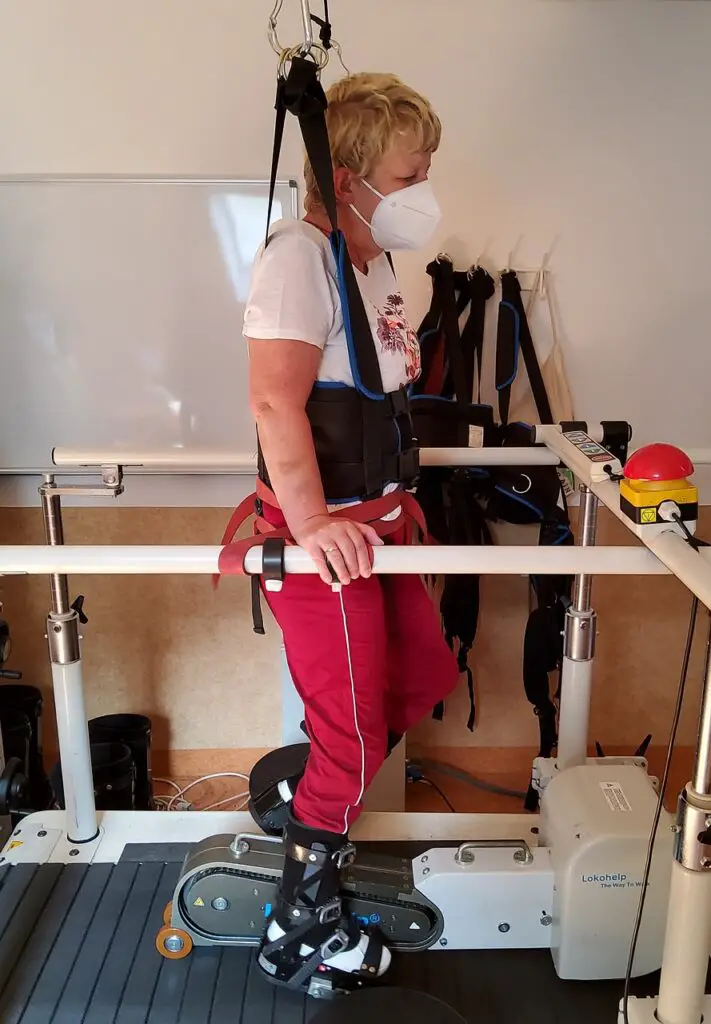Contents
Introduction
Defining Physical Therapy

Physical therapy is a healthcare specialty that focuses on the prevention, treatment, and management of physical impairments caused by injury, illness, or disease. Physical therapists are trained healthcare professionals who use a combination of exercise, manual therapy techniques, and education to help patients regain and maintain their mobility and function.
The goal of physical therapy is to reduce pain, restore movement, improve strength and coordination, and prevent or limit permanent disability. Physical therapy is an essential component of modern healthcare.
It plays a vital role in helping people recover from injuries and illnesses that may limit their ability to perform everyday activities such as walking, working, or caring for themselves. Physical therapists work with patients across the lifespan – from infants with developmental delays to seniors dealing with age-related conditions – to address underlying physical dysfunction that may be limiting their quality of life.
A Brief History of Physical Therapy
The practice of physical therapy dates back thousands of years to ancient civilizations such as China and Greece. However, modern physical therapy as we know it today began in the early 20th century during World War I when injured soldiers were treated using exercise techniques designed to restore their mobility. After the war ended in 1918, these techniques were adapted for use in civilian hospitals where they quickly became popular among patients suffering from neuromuscular disorders such as polio.
In 1921 the American Women’s Physical Therapeutic Association was established which later became The American Physical Therapy Association (APTA) — today’s largest professional organization for practicing physical therapists worldwide. By the mid-20th century advances in medical research had led to new diagnostic tools like X-rays which allowed physicians to identify musculoskeletal impairments more accurately than ever before.
This led to increased demand for skilled physical therapists who could use newly developed therapeutic approaches such as manual therapy techniques like joint mobilization and soft tissue mobilization to help patients recover from a wide range of physical conditions. Today, physical therapy is an essential component of modern healthcare, and physical therapists are among the most respected and valued healthcare professionals in the world.
Education and Training
Educational Requirements for Becoming a Physical Therapist
To become a licensed physical therapist, one must hold a Doctor of Physical Therapy (DPT) degree from an accredited program. The degree typically takes three years to complete after earning a bachelor’s degree, and includes both classroom instruction and clinical training.
Additionally, aspiring physical therapists must pass the National Physical Therapy Examination (NPTE) in order to practice. The prerequisites for entering a DPT program commonly include courses in anatomy, physiology, biology, physics, and chemistry.
Some programs may also require additional coursework such as statistics or psychology. Admissions committees also consider an applicant’s experience working with patients or in healthcare settings.
The Importance of Clinical Experience in Training
Clinical experience is critical to becoming a well-rounded physical therapist. Students in DPT programs complete multiple clinical rotations where they work with real patients under the supervision of licensed physical therapists. These rotations provide students with practical experience that cannot be replicated through classroom instruction alone.
Clinical rotations also allow students to explore different specialties within physical therapy such as orthopedics or neurology. This exposure can help students determine their area of interest and guide them towards pursuing additional training or certifications after graduation.
Continuing Education Requirements for Practicing Physical Therapists
Physical therapists are required to complete continuing education courses throughout their careers in order to maintain their licenses and stay up-to-date on advancements within the field. These courses can range from online modules to hands-on workshops and conferences.
Continuing education requirements vary by state but typically involve completing a set number of hours every few years. Many physical therapists choose to pursue specialized certifications or advanced degrees as part of their continuing education efforts, which can further enhance their skills and increase career opportunities.
Becoming a licensed physical therapist requires completion of an accredited Doctor of Physical Therapy program, passing the NPTE, and obtaining clinical experience. Continuing education is also required throughout a physical therapist’s career to maintain licensure and stay current with advancements in the field.
Specializations in Physical Therapy
Physical therapy is a diverse field, with many specializations that focus on specific parts of the body or specific patient populations. Three of the most common specializations are orthopedic physical therapy, neurological physical therapy, and pediatric physical therapy.
Orthopedic Physical Therapy: Rebuilding Strength and Mobility
Orthopedic physical therapists specialize in treating injuries and conditions that affect the musculoskeletal system, including bones, muscles, tendons, ligaments, and joints. Some common conditions that orthopedic PTs treat include fractures, sprains, strains, arthritis, and tendonitis.
To help their patients recover from these injuries and conditions, orthopedic PTs use a variety of treatments. These can include exercises to increase strength and flexibility; manual therapies like massage or joint mobilization; modalities like ice or heat to reduce pain and swelling; and sometimes even surgical interventions.
Neurological Physical Therapy: Restoring Function After Nerve Damage
Neurological physical therapists work with patients who have conditions affecting the nervous system. This can include stroke survivors who need to regain motor function on one side of their body; people with traumatic brain injuries who need help re-learning how to walk or talk; or patients with degenerative diseases like Parkinson’s who need support managing their symptoms.
To help these patients recover as much function as possible, neurological PTs use a variety of treatments. These can include exercises to improve balance or coordination; gait training to help patients walk more efficiently; neuromuscular re-education to teach muscles how to work together again after nerve damage; and sometimes even cognitive therapies to help restore memory or other cognitive functions.
Pediatric Physical Therapy: Helping Children Grow Stronger
Pediatric physical therapists specialize in working with children from birth through adolescence who have developmental delays or disabilities. These can include conditions like cerebral palsy, Down syndrome, or spina bifida, but they can also include children who are recovering from surgery or injury.
To help these children reach their full potential, pediatric PTs use a variety of treatments. These can include exercises to improve core strength and coordination; gait training to help children learn to walk independently; adaptive equipment like braces or wheelchairs; and play-based therapies that help build gross motor skills in a fun, engaging way.
While physical therapy covers a wide range of specialization areas, orthopedic physical therapy deals with musculoskeletal injuries and conditions while neurological physical therapy focuses on the nervous system and pediatric physical therapy helps children with developmental delays or disabilities. Each subfield requires unique training and expertise to provide the best possible care for patients.
The Benefits of Physical Therapy
Physical therapy has numerous benefits for individuals who experience pain, limited mobility, balance issues, or age-related conditions. Physical therapists are highly trained professionals who use evidence-based treatment techniques to help their patients recover and improve their overall quality of life. In this section, we will explore some of the key benefits of physical therapy in more detail.
Reducing Pain and Inflammation
One of the most significant benefits of physical therapy is its ability to reduce pain and inflammation. Physical therapists use a variety of techniques such as manual therapy, therapeutic exercise, and modalities like heat or cold therapy to alleviate pain and swelling caused by injuries or chronic conditions like arthritis.
The goal is not just to mask the pain but to address its underlying cause. By helping patients regain strength, flexibility and range of motion in affected areas, physical therapists can reduce their reliance on medications or other interventions that may only offer temporary relief.
Restoring Mobility
Another significant benefit of physical therapy is restoring mobility for those who have experienced a loss in function due to an injury or other medical condition. For example, if someone has been in a car accident and sustained a leg injury that requires surgery; they may need assistance walking after the procedure. A physical therapist will work with them on exercises that improve strength and flexibility so that they can regain full movement without pain or discomfort.
Improving Balance
Balance problems are common among older adults but can also affect people with neurological disorders like Parkinson’s disease or stroke survivors. Physical therapists use exercises that target the core muscles responsible for balance stability like the hips, legs & trunk muscles so that patients retain better control over their movements when walking on uneven surfaces.
Managing Age-Related Issues
Physical therapists specialize in managing age-related problems such as arthritis which affects millions of Americans annually. The key to managing arthritis is through regular exercise; physical therapy provides a controlled environment for patients to engage in low-impact exercises that help improve joint mobility and reduce pain.
Moreover, physical therapy can also help address other age-related issues like osteoporosis or chronic obstructive pulmonary disease (COPD), which often require customized treatment plans tailored to each individual patient. In sum, the benefits of physical therapy are many, and they can help people recover from injuries, manage chronic conditions, and maintain an active lifestyle.
Physical therapists use their expertise to develop a personalized treatment plan that addresses each patient’s unique needs. By taking advantage of the benefits of physical therapy, individuals can regain control over their health and enjoy a higher quality of life.
Interesting Facts About Physical Therapists
Specializations in Physical Therapy
Physical therapists have the flexibility to specialize in various areas of practice. This allows them to cater to patients with specific needs. Some physical therapists focus on sports medicine, which involves treating and preventing injuries that are common among athletes.
Others specialize in wound care, working closely with patients who have suffered from severe burns or wounds that require long-term treatment and rehabilitation. Geriatric physical therapy is another specialization that is growing in demand due to the aging population.
These physical therapists work with elderly patients who are experiencing mobility issues, balance problems, and age-related conditions such as arthritis. Women’s health is another specialization where physical therapists work closely with female patients who may be experiencing pelvic pain or discomfort during pregnancy.
Oncology physical therapy focuses on helping cancer patients maintain their strength and mobility throughout their treatment journey. This type of therapy can help reduce side effects from cancer treatments such as weakness, fatigue, and loss of function.
Working with Animals
Physical therapists don’t just work with humans; they also work with animals! Animal physical therapy is a specialized field where professionals use similar techniques used for human rehabilitation to improve animals’ mobility and quality of life.
Animal PTs may work with dogs after surgery or injury, as well as animals suffering from arthritis or other age-related conditions. They may also provide support for performance animals such as racehorses or agility dogs to help prevent injuries and improve their performance.
Tools Used by Physical Therapists
Physical therapists use a variety of tools and equipment during sessions aimed at improving patient recovery rates. These tools range from exercise equipment like treadmills, stationary bikes, weights, resistance bands, Pilates balls & more to ultrasound machines that use high-frequency sound waves to promote healing by increasing circulation & breaking down scar tissue.
Electrical stimulation devices are also commonly used to reduce pain and inflammation in specific areas of the body. Physical therapists may also use hot and cold packs to help their patients recover from injuries by reducing swelling or inflammation.
In addition, physical therapists use manual techniques like massage, stretching, and joint manipulation to improve range of motion and flexibility. They also provide education to their patients on proper posture, nutrition, and lifestyle habits that can impact overall health.
The Impact of Physical Therapy
Physical therapy has been shown to have a significant impact on patient outcomes. Studies have found that it can reduce pain, improve mobility and function, speed up recovery times after surgery or injury, prevent future injuries through exercise prescription & more!
Physical therapy is a non-invasive approach to treating a wide range of conditions like neck pain, back pain, knee problems & more. It can be used as an alternative to surgery for some conditions while providing relief from chronic pain management.
Physical therapists play a vital role in improving the quality of life for individuals suffering from injuries or health conditions that affect their mobility and functionality. They use their knowledge of anatomy & physiology coupled with specialized tools & equipment to provide high-quality treatment plans tailored specifically towards individual patient’s needs.
Conclusion
Summary of Key Points Discussed Throughout the Article
Throughout this article, we have covered a range of interesting facts about physical therapy. We have delved into the education and training required to become a physical therapist, as well as the different specializations within the field.
We have also discussed the benefits of physical therapy, including reducing pain and inflammation, restoring mobility, improving balance and managing age-related issues. In addition to these key points, we have also explored a number of fascinating tidbits about physical therapy.
For example, did you know that some physical therapists work with animals or that PTs can specialize in sports medicine or oncology? This discussion has given our readers a deeper understanding of what physical therapy involves and the significant role it plays in improving people’s lives.
The Future Outlook for the Field of Physical Therapy
As with many healthcare professions, there is an increasing demand for qualified physical therapists. An aging population means more people will need assistance with age-related issues such as mobility and balance. In addition, advances in medical technology are constantly improving treatment options for various conditions such as stroke recovery.
The future for physical therapy looks bright, with an expected growth rate faster than average compared to other occupations. As more people become aware of the benefits of PT and insurance coverage continues to expand for these services, we can expect to see an even greater need for skilled professionals in this field.
Overall, while there are many challenges facing healthcare today, we can take comfort in knowing that skilled professionals like physical therapists are able to make a positive difference in patients’ lives every day. With their expertise and dedication to helping others achieve their best possible health outcomes; they play an essential role in promoting overall wellness for individuals across all walks of life.



